
Secure web and SaaS access for remote workers
Remote and hybrid work has become normal in recent years.
It’s well established that these working policies help employees achieve a better work-life balance. They also help employers secure the best talent—even if it’s not local to a physical office.
In a recent Parallels Cloud survey, 95% of businesses mentioned they allow remote work for their employees.
In the same survey, IT managers admitted that these policies complicate managing access for remote users in their IT environment. This was closely followed by more complexity to endpoint security.
What this means is that organizations see the benefits of remote and hybrid work, but enabling this for their workforce introduces challenges in managing access and security in a dispersed IT environment.
See how Parallels software can help solve the challenges of access for remote and hybrid workforces in our on-demand webinar.
The role of cybersecurity in remote work structures
Remote work has opened organizations up to a new cybersecurity landscape.
The rise of sophisticated cyber threats, such as phishing and ransomware, has emphasized the need for robust security measures.
When asked in the Parallels Cloud Survey about their organization’s most significant security concerns, respondents identified ransomware as the top threat (39%), followed by cloud vulnerabilities (37%) and human error (16%).
Ransomware and human error are closely interconnected—techniques like phishing are designed to exploit human susceptibility. These scams, often designed to mimic legitimate communications, aim to deceive individuals into granting access or stealing sensitive data, posing significant risks to organizational security.
Cybercriminals often target the web browser, with over 80% of security incidents involving web apps in 2023. This is problematic for organizations because web browsers are among the most-used applications for employees.
Now, organizations are juggling the need for additional security measures to protect sensitive data on uncontrolled home networks with a user experience that supports productivity.
It comes down to one question:
How are you supposed to ensure employees have everything they need for their jobs—and the security to do it safely?
A multi-faceted approach to application delivery
Today, many organizations use a combination of different infrastructures to host or stream key applications.
What they’re using depends on where the organization is on their IT journey. They could have applications and data delivered through on-premises systems, public cloud services, or SaaS (software as a service) to meet their employees’ needs.
This hybrid or multi-cloud approach can cause complexity for IT administrators, compounded by the challenges of managing a remote workforce.
How Parallels Remote Application Server (RAS) supports remote work
Parallels RAS is designed to simplify the deployment and management of multi-infrastructure environments.
It brings different infrastructures together through a central management console to deliver applications and desktops securely to any type of device the employer uses, anytime and anywhere.
Parallels RAS can deliver applications from RDS hosts, VDI, multi-cloud infrastructures, and cloud technologies like Azure Virtual Desktop. It can even host applications locally on the employee’s device through the Parallels Client.
This means the Parallels Client can be used as a central point of consumption for end users, giving them a unified application experience no matter where applications are hosted.
As Chris Marks, Principal Outbound Product Manager for Parallels, explains, “Parallels RAS can be used as a central point of consumption for your applications, whether they are local, remote, or SaaS-based.”
What does this mean for an IT team?
It means they have more flexibility and control, even with remote workforces. Features like local app launch in Parallels RAS 20 allow access to local and published applications directly in the Parallels Client.
This way, applications can launch directly from the user’s machine, so they’re no longer fetched from remote session hosts.
IT administrators have more options on where to host their applications. They might prefer to run more graphics-intensive or private applications locally.
IT administrators can also configure alternative access to local applications by specifying a URL. This same technology is designed to integrate Parallels Browser Isolation into Parallels RAS for enhanced security options when accessing SaaS and web browsing—but more on that later.
For users, the Parallels RAS Client becomes the centralized hub for accessing local and remote applications. It eliminates the need to switch between the client and the local start menu, saving time and improving efficiency.
Take a closer look at how to launch local apps with the Parallels client.
How software like Parallels Browser Isolation keeps remote work secure
In our recent Parallels Cloud Survey, it was suggested that 80% of all participants have at least 25% of applications delivered as SaaS. Understandably, the increase in SaaS and web-based apps adoption has also meant more exposure for remote workers to web-based threats.
“The browser itself has become a much bigger deal,” Marks said. “It’s the point of consumption for a lot of applications—not all of them, but certainly a lot of them.”
Solutions like Parallels Browser Isolation keep sensitive data secure in the face of these challenges by keeping users away from direct threats.
Parallels Browser Isolation provides secure, high-performance access to SaaS and internal web applications while protecting corporate networks and endpoints from external threats.
By processing and rendering web content in a remote, sandboxed environment using the Chromium Embedded Framework (CEF), malicious content never reaches the user’s endpoint or the corporate network.
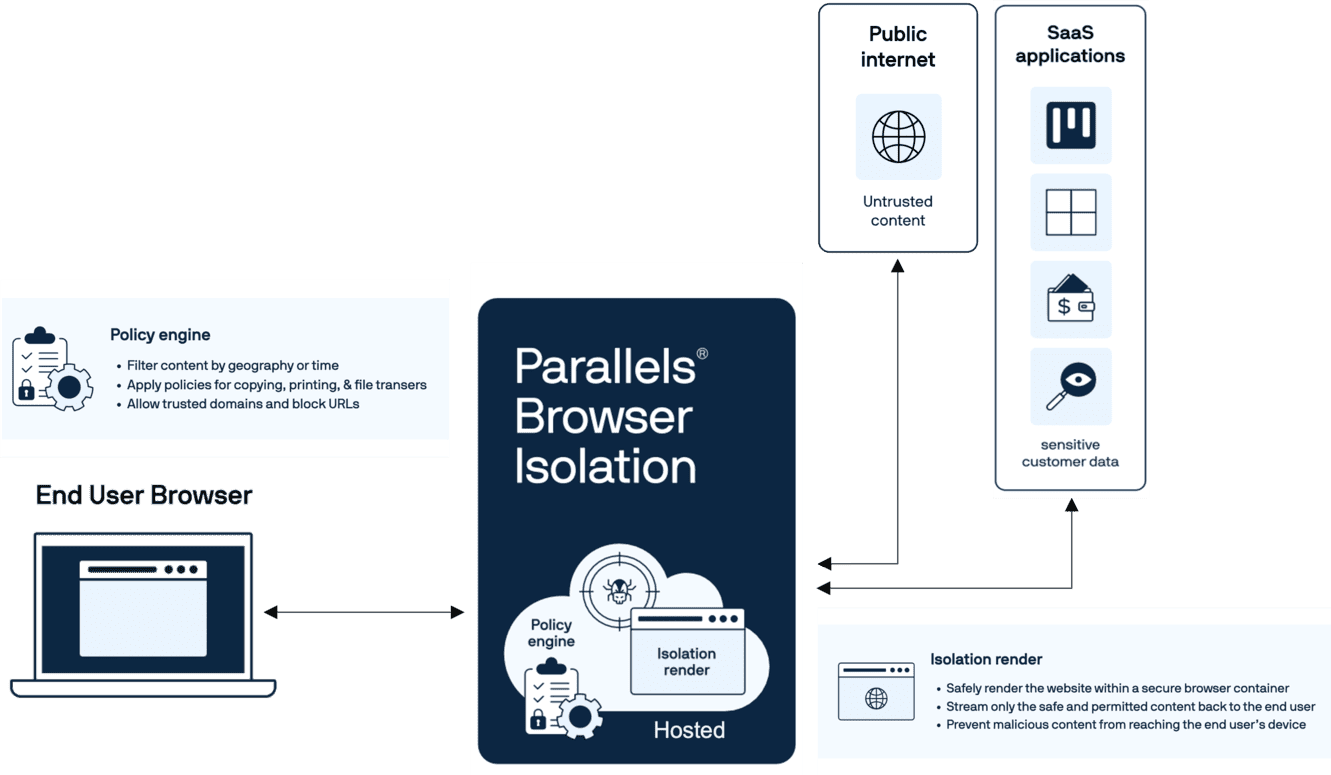
Unlike VPN or firewall solutions, which only encrypt or filter traffic, leaving endpoints exposed to browser-based threats, Parallels Browser Isolation sends a visual stream of pixels to the device.
This creates a secure barrier between users and the web, isolating potential security risks such as malware, phishing, or data breaches and ensuring that users can safely access SaaS applications or browse the internet.
IT admins also get greater visibility into user activity, receiving insights into how employees interact with SaaS applications and web content, allowing them to monitor for risky behavior and enforce security policies.
This approach is beneficial for organizations prioritizing Zero Trust models. For example, admins can set up conditional access policies so users can only reach systems like Azure or Okta if they’re using secure browser IP ranges. This ensures users are authenticated and secure before accessing sensitive applications.
How Parallels Workspace solutions integrate for balance
Combining Parallels RAS with Parallels Browser Isolation gives IT managers a powerful way to support remote workers, securely deliver critical applications, and enforce Zero Trust principles for web and SaaS access—all through a unified experience in the Parallels Client.
Next, let’s look at the steps to create a secure way to access a SaaS application in Parallels RAS.
First, IT administrators will use the Parallels RAS management console to set up an app based on URL. This is done in the local application resources in the publishing section.
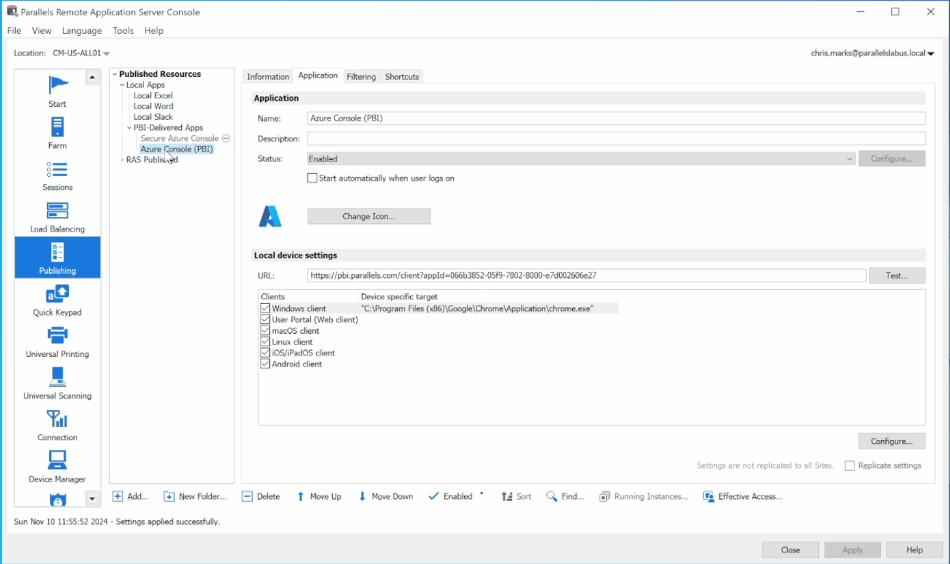
Next, as part of the local device settings, admins can add a specific browser isolation application URL. The app ID has already been set up within the PBI management console.
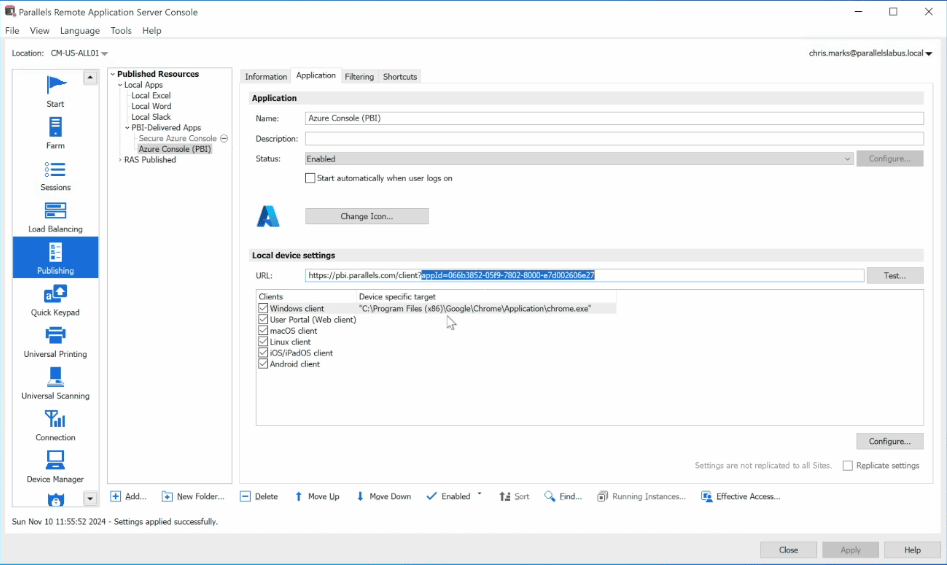
Next, admins can adjust settings within the Parallels Client for Windows so the URL opens in a Chrome window.
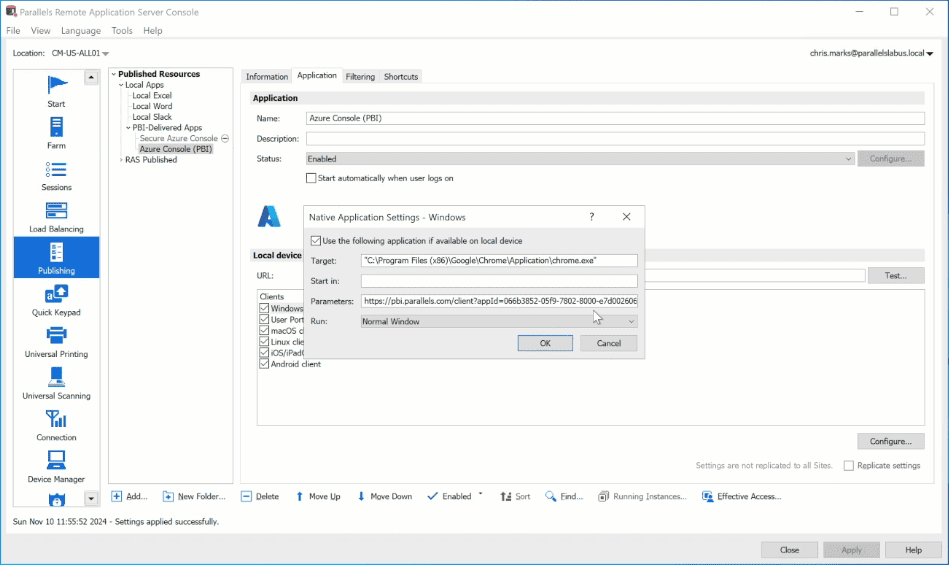
Shortly after, the icon will be visible in the Parallels Client.
![]()
Now when the application is launched, it will connect within the Parallels Browser Isolation environment based on the designated URL or SaaS application.
This is visible by the watermarked screen, and the navigation buttons on the Chrome browser are locked down so a user cannot use them for traditional web searching. These are additional policies, which can be amended within the management console.
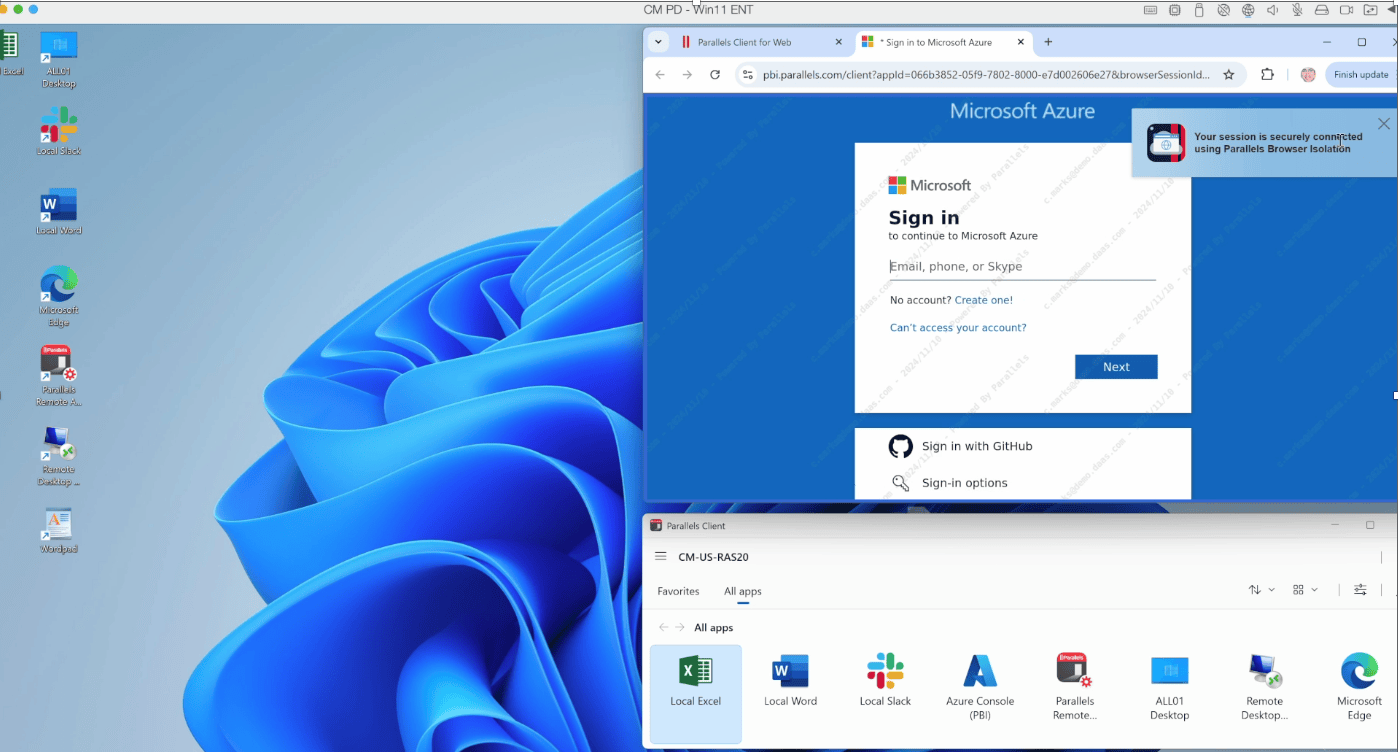
Parallels Workspace solutions give users a frictionless way to securely access local, remote, and SaaS-based applications.
It protects these interactions with end-to-end security, making life easier and safer for users and IT teams alike. And ultimately, that’s what the future of remote work looks like.
“It’s all about choice—delivering the applications where your business can best make use of them, whether on-premises, in the cloud, or through SaaS.”
–Chris Marks, Principal Outbound Product Manager for Parallels
Learn more about Parallels and the future of remote work
The future of remote work needs balance—user experiences and security, made for the long haul.
Together, Parallels RAS and Parallels Browser Isolation give organizations a way to find that balance with centralized management and robust security. This paves the way for flexible, scalable, and secure work solutions.
If you’re looking to simplify your application delivery, reduce risks, and create a productive experience for your employees, now’s the time to explore Parallels RAS and Parallels Browser Isolation.
Interested in learning more? Watch our on-demand webinar to see how Parallels RAS and Parallels Browser Isolation are coming together to create unified workspaces.
Explore the future of cybersecurity and remote work for your organization with free trials of Parallels RAS and Parallels Browser Isolation!

